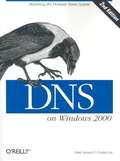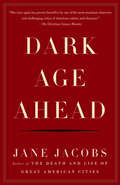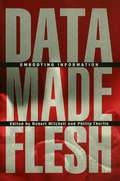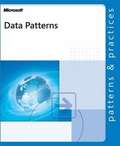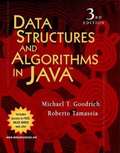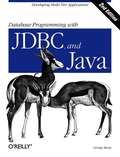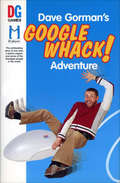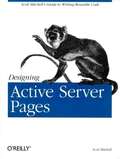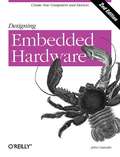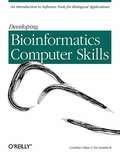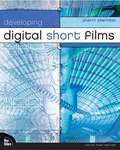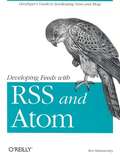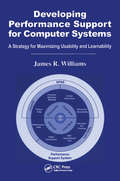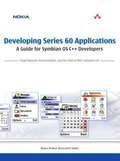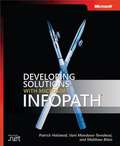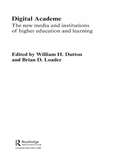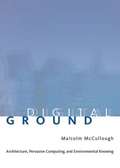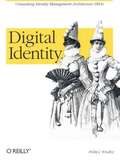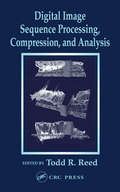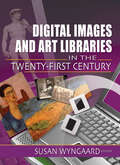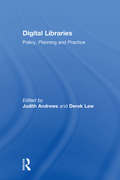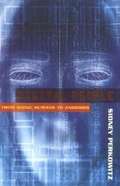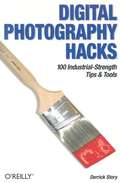- Table View
- List View
DNS on Windows 2000, 2nd Edition
by Cricket Liu Matt LarsonDNS on Windows 2000 is a special Windows-oriented edition of the classic DNS and BIND. The Domain Name System (DNS) is one of the Internet's fundamental building blocks: the distributed host information database that's responsible for translating names into addresses, routing mail to its proper destination, and many other services. As the preface says, if you're using the Internet, you're already using DNS--even if you don't know it. Besides covering general issues like installing, setting up, and maintaining the server, DNS on Windows 2000 tackles those specific to the Windows environment: integration between DNS and Active Directory, conversion from BIND to the Microsoft DNS server, and registry settings. You'll also acquire a grounding in: Security issues System tuning Caching Zone change notification Troubleshooting Planning for growth What DNS does, how it works, and when you need to use it How to find your own place in the Internet's namespace Setting up name servers Integrating Active Directory with DNS Dynamic updates, storing zone information in Active Directory, and incremental zone transfers Using MX records to route mail Configuring hosts to use name servers Subdividing domains (parenting) Securing your name server: preventing unauthorized zone transfers Mapping one name to several servers for load sharing Troubleshooting: using nslookup, diagnosing common problems If you're a Windows administrator, DNS on Windows 2000 is the operations manual you need for working with DNS every day; if you're a Windows user who simply wants to take the mystery out of the Internet, this book is a readable introduction to the Internet's architecture and inner workings. Topics include:
Dark Age Ahead
by Jane JacobsIn this indispensable book, urban visionary Jane Jacobs--renowned author of The Death and Life of Great American Cities and The Economy of Cities--convincingly argues that as agrarianism gives way to a technology-based future, we stand on the brink of a new dark age, a period of cultural collapse. Jacobs pinpoints five pillars of our culture that are in serious decay: community and family; higher education; the effective practice of science; taxation, and government; and the self-regulation of the learned professions. The corrosion of these pillars, Jacobs argues, is linked to societal ills such as environmental crisis, racism, and the growing gulf between rich and poor. But this is a hopeful book as well as a warning. Drawing on her vast frame of reference-from fifteenth-century Chinese shipbuilding to Ireland's cultural rebirth-Jacobs suggests how the cycles of decay can be arrested and our way of life renewed. Invigorating and accessible, Dark Age Ahead is not only the crowning achievement of Jane Jacobs' career, but one of the most important works of our time.From the Trade Paperback edition.
Data Made Flesh: Embodying Information
by Robert Mitchell Phillip ThurtleIn an age of cloning, cyborgs, and biotechnology, the line between bodies and bytes seems to be disappearing. Data Made Flesh is the first collection to address the increasingly important links between information and embodiment, at a moment when we are routinely tempted, in the words of Donna Haraway, "to be raptured out of the bodies that matter in the lust for information," whether in the rush to complete the Human Genome Project or in the race to clone a human being.
Data Patterns
by Microsoft CorporationGet expert guidance on using patterns to expedite the design and development of data services in an enterprise business solution. Patterns provide a common vocabulary and taxonomy for database designers, developers, and architects to describe solutions concisely. Each pattern contains a simple mechanism for solving a commonly recurring technical challenge and enables the reuse of key architectural, design, and implementation decisions. While each pattern can be understood and applied alone, you can also combine these patterns together to simplify the development of complex systems. Software design professionals have increasingly recognized the value of patterns as a language for sharing design experiences and improving the reliability and productivity of their solutions. This book embraces and extends the work of the growing patterns community by showing how to use patterns to solve data problems within the enterprise with Microsoft products and technologies. These patterns address the need to create the database designs and the data services that exist invisibly to the applications that use the data; in other words, the data and services that exist within the data ecosystem. This reference contains a catalog of 12 data patterns, including examples of implementations that use Microsoft SQL Server. All PATTERNS & PRACTICES guides are reviewed and approved by Microsoft engineering teams, consultants, partners, and customers--delivering accurate, real-world information that's been technically validated and tested.
Data structures and Algorithms in Java: 3rd edition
by Micheal T. Goodrich Roberto TamassiaThis edition is designed to provide an introduction to data structures and algorithms, including their design, analysis, and implementation. <P><P><i>Advisory: Bookshare has learned that this book offers only partial accessibility. We have kept it in the collection because it is useful for some of our members. Benetech is actively working on projects to improve accessibility issues such as these.</i>
Database Programming with JDBC and Java, 2nd Edition
by George ReeseJava and databases make a powerful combination. Getting the two sides to work together, however, takes some effort--largely because Java deals in objects while most databases do not. This book describes the standard Java interfaces that make portable object-oriented access to relational databases possible and offers a robust model for writing applications that are easy to maintain. It introduces the JDBC and RMI packages and uses them to develop three-tier applications (applications divided into a user interface, an object-oriented logic component, and an information store). The book begins with a quick overview of SQL for developers who may be asked to handle a database for the first time. It then explains how to issue database queries and updates through SQL and JDBC. It also covers the use of stored procedures and other measures to improve efficiency, where these are available. But the book's key contribution is a set of patterns that let developers isolate critical tasks like object creation, information storage and retrieval, and the committing or aborting of transactions. The second edition includes more basics of JDBC and SQL, with more examples, and a deeper discussion about the architecture of a robust, maintainable database application. The second edition also explains the relationship between JDBC and Enterprise JavaBeans.
Dave Gorman's Googlewhack! Adventure
by Dave GormanA “hilarious” tale of procrastination, obsession, search engines, and worldwide travel, based on the award-winning one-man comedy show (Booklist). “When he turned 31, British stand-up comic Gorman decided he wanted to be taken seriously, so he landed a contract to write a novel. He took novel writing so seriously he grew a beard. But no matter how he tried, Gorman couldn’t actually write anything. One of his procrastination methods was googlewhacking—a game in which the ‘whacker’ types two different words into Google and tries to get exactly one hit. His first googlewhack, ‘Dork Turnspit,’ led him to a site featuring photographs of women with dogs. Gorman found the site so fascinating that he met its owner and then asked the women-and-dogs fellow to find him another googlewhack. And so begins one of history’s greatest ventures in procrastination. Over the next weeks, Gorman traveled tens of thousands of miles, everywhere from Columbus, Ohio, to Beijing, China, meeting googlewhacks, trying to string together 10 in a row by getting two new googlewhacks from each person he met . . . Gorman’s self-deprecating wit and irrational dedication to his quest make this a hilarious travelogue.” —Booklist “Fresh, funny and entertaining.” —The Daily Mail “An onslaught of amusing anecdotes and digressive detours.” —Publishers Weekly
Designing Active Server Pages
by Scott MitchellDevelopers of Active Server Pages often reinvent the wheel. Their background in web design, with its separate HTML page for each viewable web page on a site, leads many ASP developers to create a distinct ASP page each time they think they need one. Often times, these pages are functionally similar. With intelligent planning, an ASP developer stands to save a great deal of time by creating reusable ASP pages. Designing Active Server Pages is tailor-made for these developers. There is currently a plethora of Active Server Pages books. However, the vast majority of these books are either technical references or how-to books for beginners. Designing Active Server Pages is written for the intermediate to advanced user. Furthermore, nearly every other book on ASP focuses on using VBScript, even though ASP supports an array of scripting languages, including JScript and PerlScript. Designing Active Server Pages shows how to start using these other languages. The latest version of the scripting engines (Version 5.1 for VBScript) adds new features not available before the 5.0 release. These features include class support for VBScript, and Regular Expression searching through the use of a COM object. Designing Active Server Pages explains why using classes in VBScript is beneficial, and demonstrates the power of regular expression searching. This book shows how to simplify the process by only requiring one ASP page to handle ALL of the Forms throughout a web site, thus reducing the amount of code one has to write. Topics include: Using various Microsoft and third-party components to enhance ASP pages Creating components using VB and/or VC++ Sample code for performing routine ASP tasks Techniques to allow for reusable database scripts on the database system and on ASP pages How to obtain and register third-party components, thus saving massive amounts of time by reusing someone else's code Designing Active Server Pages is for developers who have already mastered the basics of ASP application development and are ready to take the next logical step. It is sure to become an indispensable part of every web developer's library.
Designing Embedded Hardware
by John CatsoulisEmbedded computer systems literally surround us: they're in our cell phones, PDAs, cars, TVs, refrigerators, heating systems, and more. In fact, embedded systems are one of the most rapidly growing segments of the computer industry today. Along with the growing list of devices for which embedded computer systems are appropriate, interest is growing among programmers, hobbyists, and engineers of all types in how to design and build devices of their own. Furthermore, the knowledge offered by this book into the fundamentals of these computer systems can benefit anyone who has to evaluate and apply the systems. The second edition of Designing Embedded Hardware has been updated to include information on the latest generation of processors and microcontrollers, including the new MAXQ processor. If you're new to this and don't know what a MAXQ is, don't worry--the book spells out the basics of embedded design for beginners while providing material useful for advanced systems designers. Designing Embedded Hardware steers a course between those books dedicated to writing code for particular microprocessors, and those that stress the philosophy of embedded system design without providing any practical information. Having designed 40 embedded computer systems of his own, author John Catsoulis brings a wealth of real-world experience to show readers how to design and create entirely new embedded devices and computerized gadgets, as well as how to customize and extend off-the-shelf systems. Loaded with real examples, this book also provides a roadmap to the pitfalls and traps to avoid. Designing Embedded Hardware includes: The theory and practice of embedded systems Understanding schematics and data sheets Powering an embedded system Producing and debugging an embedded system Processors such as the PIC, Atmel AVR, and Motorola 68000-series Digital Signal Processing (DSP) architectures Protocols (SPI and I2C) used to add peripherals RS-232C, RS-422, infrared communication, and USB CAN and Ethernet networking Pulse Width Monitoring and motor control If you want to build your own embedded system, or tweak an existing one, this invaluable book gives you the understanding and practical skills you need.
Developing Bioinformatics Computer Skills
by Per Jambeck Cynthia GibasBioinformatics--the application of computational and analytical methods to biological problems--is a rapidly evolving scientific discipline. Genome sequencing projects are producing vast amounts of biological data for many different organisms, and, increasingly, storing these data in public databases. Such biological databases are growing exponentially, along with the biological literature. It's impossible for even the most zealous researcher to stay on top of necessary information in the field without the aid of computer-based tools. Bioinformatics is all about building these tools. Developing Bioinformatics Computer Skills is for scientists and students who are learning computational approaches to biology for the first time, as well as for experienced biology researchers who are just starting to use computers to handle their data. The book covers the Unix file system, building tools and databases for bioinformatics, computational approaches to biological problems, an introduction to Perl for bioinformatics, data mining, and data visualization. Written in a clear, engaging style, Developing Bioinformatics Computer Skills will help biologists develop a structured approach to biological data as well as the tools they'll need to analyze the data.
Developing Digital Short Films
by Sherri SheridanThe film market is shifting toward traditional desktop technology to create productions. . . digitally. Unlike traditional film production, though, digital films require producers to employ a different pre-production process. Developing Digital Short Films explores how unique character and set designs, bluescreen ideas, special effects, and simple 2D character animation techniques can be used as narrative devices for telling stories. Part One focuses on generating visual ideas that are ideal for digital production and creating a short film script. Part Two focuses on the visual pre-production of a short film and the issues that go through a filmmaker's mind as they struggle with how best to present their stories; this includes topics like 101 camera shots, frame composition, developing a visual look and feel, color maps, and creating storyboards and animatics. Part Three explores the different production environments of DV, 2D and 3D, and how they shape the telling of stories based upon the technological strengths of each style.
Developing Feeds with RSS and Atom
by Ben HammersleyPerhaps the most explosive technological trend over the past two years has been blogging. As a matter of fact, it's been reported that the number of blogs during that time has grown from 100,000 to 4.8 million-with no end to this growth in sight. What's the technology that makes blogging tick? The answer is RSS--a format that allows bloggers to offer XML-based feeds of their content. It's also the same technology that's incorporated into the websites of media outlets so they can offer material (headlines, links, articles, etc.) syndicated by other sites. As the main technology behind this rapidly growing field of content syndication, RSS is constantly evolving to keep pace with worldwide demand. That's where Developing Feeds with RSS and Atom steps in. It provides bloggers, web developers, and programmers with a thorough explanation of syndication in general and the most popular technologies used to develop feeds. This book not only highlights all the new features of RSS 2.0-the most recent RSS specification-but also offers complete coverage of its close second in the XML-feed arena, Atom. The book has been exhaustively revised to explain: metadata interpretation the different forms of content syndication the increasing use of web services how to use popular RSS news aggregators on the market After an introduction that examines Internet content syndication in general (its purpose, limitations, and traditions), this step-by-step guide tackles various RSS and Atom vocabularies, as well as techniques for applying syndication to problems beyond news feeds. Most importantly, it gives you a firm handle on how to create your own feeds, and consume or combine other feeds. If you're interested in producing your own content feed, Developing Feeds with RSS and Atom is the one book you'll want in hand.
Developing Performance Support for Computer Systems: A Strategy for Maximizing Usability and Learnability
by James R. WilliamsDeveloping Performance Support for Computer Systems: A Strategy for Maximizing Usability and Learnability provides detailed planning, design, and development guidance for generating performance support for new or upgraded computer systems. Performance support includes documentation, online help, coaches and wizards, training, and other materials necessary to enable users to perform their jobs more efficiently and effectively.This volume offers a strategy for maximizing ease-of-use and ease-of-learning through an integrated performance support systems approach. The text provides how-to guidance throughout that developers can apply directly to the design of their performance support tools and products. Rather than cover a few specific topic areas, it examines the entire spectrum of performance support. The book explains how to match performance support methods to task requirements, gives an overview of important user characteristics, and provides general guidance for presentation, layout, formatting, media selection, the use of color and icons, and accessibility. Evaluation checklists are included in the appendices and are also available online.Although this book primarily addresses the development of performance support for large software systems, the principles and approaches are valuable for any systems development environment.
Developing Series 60 Applications: A Guide for Symbian OS C++ Developers
by Leigh Edwards Richard Barker Staff of EMCC Software Ltd.Sixty example applications, focused entirely on native Symbian OS C++ programming.
Developing Solutions with Microsoft® InfoPath™
by Patrick Halstead Vani MandavaTwo former and one current engineer at the software behemoth describe how to use its software package that serves both as a designer for creating XML forms and as an editor for displaying them to be filled out. Anyone familiar with a word processor should be able to follow the discussion. Annotation ©2006 Book News, Inc., Portland, OR (booknews.com)
Developing Solutions with Microsoft® InfoPath™
by Patrick Halstead Matthew Blain Vani Mandava-TeradesaiBuild innovative, XML-based solutions faster--with expert guidance from three veterans of the Microsoft InfoPath design team. Discover how to use common InfoPath design patterns to accelerate the development of forms with a dynamic, easy-to-use front end that connects seamlessly with middle-tier services and back-end servers, including databases, Web services, and Microsoft BizTalk® Server. The authors walk you through a range of programming scenarios--explaining the pros and cons of various approaches and sharing their best practices and undocumented tips. You'll also find real-world examples, including a complete, three-tier business solution. Discover how to: Customize and deploy your own InfoPath forms, taking advantage of ready-made sample code Create "smart" InfoPath forms to provide a dynamic experience using conditional visibility, data validation, and autopopulation Design a rich form interface with structured and dynamic sections, multiple views, and calculations Build forms-based workflow processing into InfoPath forms using e-mail, SharePoint® servers, and BizTalk Use the Microsoft .NET common language runtime-based object model to increase development flexibility Receive and submit data for your forms using back-end databases and Web services
Digital Academe: New Media in Higher Education and Learning
by Brian D. Loader William H. DuttonThis book responds to an ever-increasing call from educators, policy makers, journalists, parents and the public at large for analysis that cuts through the hype surrounding the information revolution to address key issues associated with new media in higher education and learning. This collection is of value to those who are seeking a critical, non-commercial exposition of both the enormous opportunities and challenges for higher education that are tied to the use of new information and communication technologies (ICTs) in the development of distance education and distributed learning.The chapters are written by leading exponents, practitioners and researchers from a variety of disciplinary perspectives and the collection as a whole spans national boundaries and reaches beyond the research community to relate to issues of policy and practice.
Digital Graphics and Animation with Adobe® Illustrator® 10, Adobe® Photoshop® 7, and Macromedia® Flash® MX
by Prentice HallDigital Graphics and Animation includes two types of projects: free-form projects and step-by-step projects.
Digital Ground: Architecture, Pervasive Computing, and Environmental Knowing
by Malcom McclloughDigital Ground is an architect's response to the design challenge posed by pervasive computing. One century into the electronic age, people have become accustomed to interacting indirectly, mediated through networks.
Digital Identity
by Phil WindleyThe rise of network-based, automated services in the past decade has definitely changed the way businesses operate, but not always for the better. Offering services, conducting transactions and moving data on the Web opens new opportunities, but many CTOs and CIOs are more concerned with the risks. Like the rulers of medieval cities, they've adopted a siege mentality, building walls to keep the bad guys out. It makes for a secure perimeter, but hampers the flow of commerce. Fortunately, some corporations are beginning to rethink how they provide security, so that interactions with customers, employees, partners, and suppliers will be richer and more flexible. Digital Identity explains how to go about it. This book details an important concept known as "identity management architecture" (IMA): a method to provide ample protection while giving good guys access to vital information and systems. In today's service-oriented economy, digital identity is everything. IMA is a coherent, enterprise-wide set of standards, policies, certifications and management activities that enable companies like yours to manage digital identity effectively--not just as a security check, but as a way to extend services and pinpoint the needs of customers. Author Phil Windley likens IMA to good city planning. Cities define uses and design standards to ensure that buildings and city services are consistent and workable. Within that context, individual buildings--or system architectures--function as part of the overall plan. With Windley's experience as VP of product development for Excite@Home.com and CIO of Governor Michael Leavitt's administration in Utah, he provides a rich, real-world view of the concepts, issues, and technologies behind identity management architecture. How does digital identity increase business opportunity? Windley's favorite example is the ATM machine. With ATMs, banks can now offer around-the-clock service, serve more customers simultaneously, and do it in a variety of new locations. This fascinating book shows CIOs, other IT professionals, product managers, and programmers how security planning can support business goals and opportunities, rather than holding them at bay.
Digital Image Sequence Processing, Compression, and Analysis (Computer Engineering Ser.)
by Todd R. ReedDigital image sequences (including digital video) are increasingly common and important components in technical applications ranging from medical imaging and multimedia communications to autonomous vehicle navigation. The immense popularity of DVD video and the introduction of digital television make digital video ubiquitous in the consumer domain.
Digital Images and Art Libraries in the Twenty-First Century
by Susan WyngaardIncrease your knowledge of the digital technology that is essential for art librarianship today! Digital Images and Art Libraries in the Twenty-First Century is your key to cutting-edge discourse on digital image databases and art libraries. Just as early photographers tried to capture the world to make it accessible, now information professionals in art libraries and art museums are creating and sharing digital collections to make them broadly accessible. This collection shares the experience and insight of art information managers who have taken advantage of digital technology to expand the coverage and scope of image collections and improve access to previously difficult-to-locate information. In Digital Images and Art Libraries in the Twenty-First Century you will learn step-by-step what goes into the planning and creation of these "digital global museums" and what advances are still being made in this rapidly evolving discipline. The pros and cons of these ventures are thoroughly examined, as experts take you through the theoretical and practical issues they have faced along the way. Digital Images and Art Libraries in the Twenty-First Century will help you gain a better understanding of: image censorship Web filters user expectations the comparative impact on the viewer of surrogate images versus artifacts databases as an in-class teaching and learning tool You can also read in-depth about the existing digital image collections ArtSTOR and OhioLINK Digital Media Center (DMC) as well as the specific art library materials being considered for these collections. Find out what it takes to catalogue these materials and how the proliferation of digital images is changing the profession of art librarianship. Digital Images and Art Libraries in the Twenty-First Century is a thorough and highly specialized book suitable for expert librarians and visual resource curators, but its straightforward style also makes it suitable for beginners and students interested in library and information science programs.
Digital Libraries: Policy, Planning and Practice
by Judith AndrewsDigital Libraries: Policy, Planning and Practice brings together a wealth of international experience in the planning and implementation of digital and hybrid library projects, providing a stimulating and informative handbook and reference for library staff and information managers. It consists of chapters contributed by leading specialists from Europe, North America, South Africa and the Middle East, who offer their insight into the decision-making processes that have shaped a variety of different digitization programmes. Beginning with introductory overviews of the digital library context, the US Digital Library Program and the UK e-lib and hybrid library programmes, Digital Libraries then divides into two main sections on policy and planning, and implementation and practice. The first explores concerns such as financial and resource planning, digitized compared to born-digital content and related service issues, open access to scholarly research archives, policies for and against preservation and their justification, and evaluating electronic information services. The second section is based on case studies on major European and North American digital library projects, including the Glasgow Digital Library, UCEEL (University of Central England Electronic Library), the Networked Digital Library of Theses and Dissertations (discussed in the context of five international projects), the Indiana University music Variations and Variations2 Project, and the beginnings of the Library of Congress digital program and its integration into core library services. The concluding chapter discusses the way forward for digital libraries in the context of experiences at Tilburg University library, and possible enabling or limiting factors in the future. The result of drawing together these varied and illuminating experiences is a book that offers useful information and comparisons for all digital library project staff, institutional administrators, educators and developers of learning technology. It also provides useful pointers for researchers and project staff involved in archive and museum projects, as well as introducing students to the key ingredients of successful digital libraries.
Digital People: From Bionic Humans To Androids
by Sidney PerkowitzRobots, androids, and bionic people pervade popular culture, from classics like Frankenstein and R.U.R. to modern tales such as The Six Million Dollar Man, The Terminator, and A.I. Our fascination is obvious – and the technology is quickly moving from books and films to real life. In a lab at MIT, scientists and technicians have created an artificial being named COG. To watch COG interact with the environment – to recognize that this machine has actual body language – is to experience a hair-raising, gut-level reaction. Because just as we connect to artificial people in fiction, the merest hint of human-like action or appearance invariably engages us. Digital People examines the ways in which technology is inexorably driving us to a new and different level of humanity. As scientists draw on nanotechnology, molecular biology, artificial intelligence, and materials science, they are learning how to create beings that move, think, and look like people. Others are routinely using sophisticated surgical techniques to implant computer chips and drug-dispensing devices into our bodies, designing fully functional man-made body parts, and linking human brains with computers to make people healthier, smarter, and stronger. In short, we are going beyond what was once only science fiction to create bionic people with fully integrated artificial components – and it will not be long before we reach the ultimate goal of constructing a completely synthetic human-like being. It seems quintessentially human to look beyond our natural limitations. Science has long been the lens through which we squint to discern our future. Although we are rightfully fearful about manipulating the boundaries between animate and inanimate, the benefits are too great to ignore. This thoughtful and provocative book shows us just where technology is taking us, in directions both wonderful and terrible, to ponder what it means to be human.
Digital Photography Hacks
by Derrick StoryGoing beyond the standard fare of most digital photography books, Digital Photography Hacks shares the knowledge that professional photographers have learned through thousands of shots' worth of experience and years of experimentation. With exquisite, full-color photos throughout, the book presents 100 proven techniques in the areas of daytime and nighttime photo secrets, flash magic, digital camera attachments, fun photo projects, camera phone tricks, and more. This book is your passport to taking the kind of digital photos you've always aspired to.
